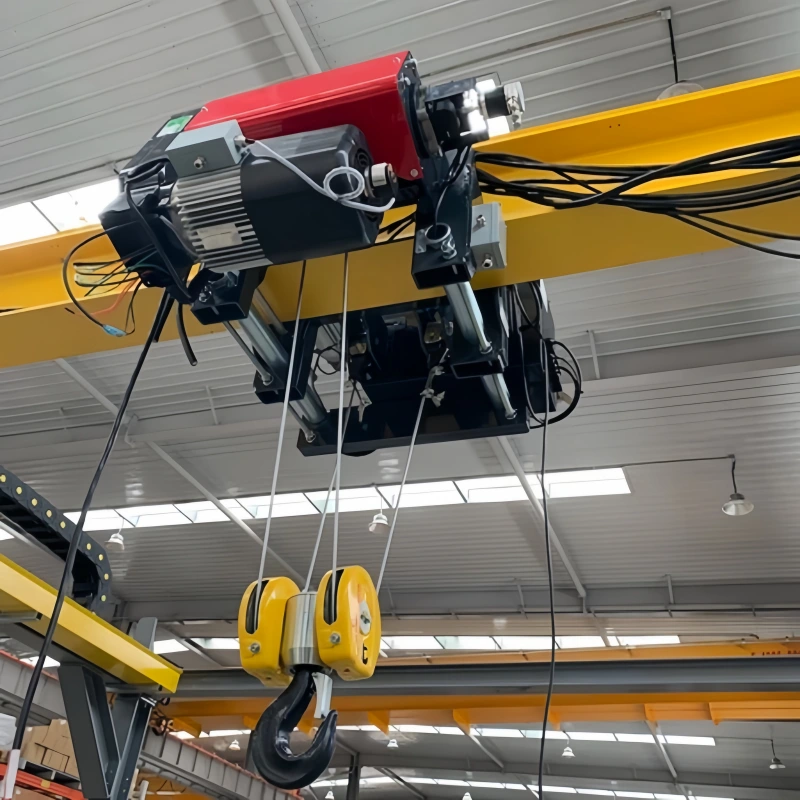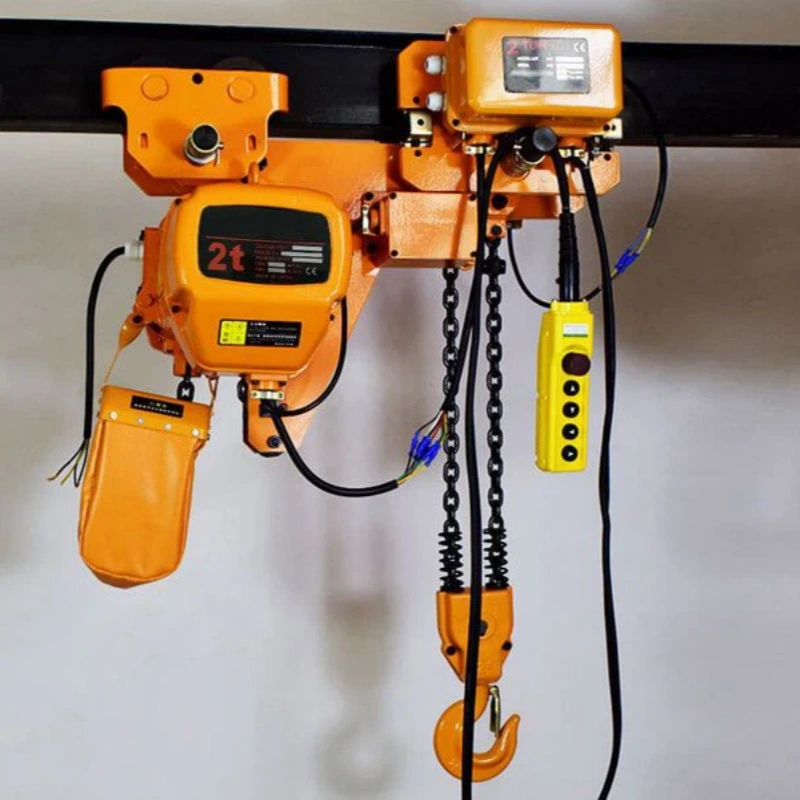When you anchor your vessel, you should use a chain length that matches the conditions. Most experts recommend a scope of 5 to 7 times the water depth for regular situations. In heavy weather, you may need 8 to 10 times the depth to ensure safety.
Selecting the right anchor chain length gives you peace of mind and keeps your vessel secure. Powerful Machinery provides certified chains and marine solutions trusted by professionals around the world.
Key Takeaways
Use a chain length of 5 to 7 times the water depth for regular conditions. In heavy weather, increase to 8 to 10 times for safety.
Always check your vessel’s classification and local regulations to determine the minimum anchor chain length required for safety.
Consider environmental factors like weather, wind, and tides when calculating the necessary anchor chain length for your boat.
Regularly inspect and maintain your anchor chain to prevent rust and damage, ensuring reliable performance during anchoring.
Mark your anchor chain at intervals to simplify deployment and retrieval, enhancing safety and control while anchoring.
Anchor Chain Length Guide
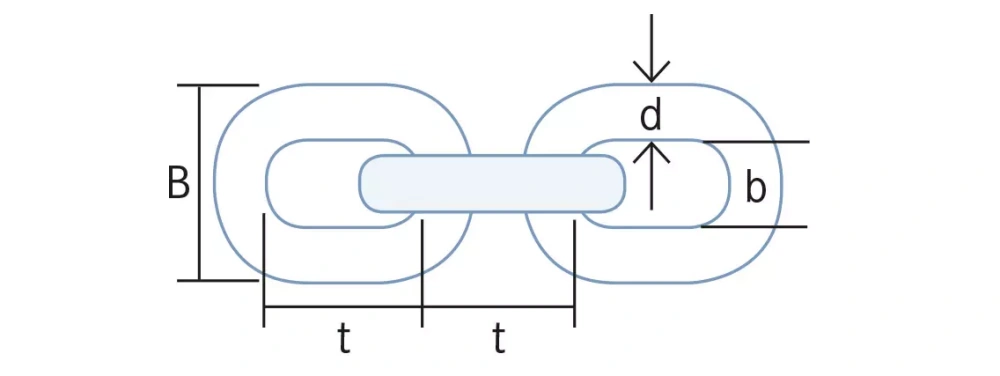
Minimum Anchor Chain Length
You need to know the minimum anchor chain length for your vessel to meet safety and regulatory requirements. Industry standards set clear guidelines for different vessel types. The table below shows some common requirements:
Requirement | Description |
|---|---|
Vessels under 200 feet | One anchor of tabular weight and one-half the tabulated length of anchor chain, or two anchors of one-half the tabular weight, with total length as per standards. |
Tugs under 200 feet | At least one anchor of one-half the tabular weight listed in applicable standards. |
Classification societies | Standards from other recognized societies may be used with approval. |
You should always check your vessel’s classification and local regulations. Using less than the minimum anchor chain length can put your vessel at risk.
Tip: Powerful Machinery offers custom anchor chains that meet or exceed these standards. You can choose from studless anchor chains, dock fender chains, and more, all certified for marine use.
Recommended Anchor Chain Length
For most vessels, experts recommend a scope of 5 to 7 times the water depth. This ratio helps you achieve the maximum safe length for secure anchoring. International maritime organizations also provide guidance based on vessel type and chain diameter:
Vessel Type | Recommended Chain Diameter (mm) |
|---|---|
Large Oil Tanker (300,000 tons) | > 110 mm |
Ultra-large Freighters (100,000 tons+) | 90 mm to > 100 mm |
Cargo Ships in Rough Seas | +5 to +10 mm additional diameter |
If you use a chain below the recommended length, you face several risks:
Safety Implication | Description |
|---|---|
Reduced Holding Power | A higher angle of pull increases the risk of anchor dislodgement. |
Increased Risk of Anchor Drag | A shorter chain may not provide enough scope, leading to anchor drag. |
Potential Structural Damage | A runaway chain can endanger the crew and damage the vessel. |
You can trust Powerful Machinery’s certified anchor chains to deliver the strength and reliability you need. Their products undergo rigorous testing and meet international standards, giving you confidence in every anchoring situation.
How Much Anchor Chain Do You Need?
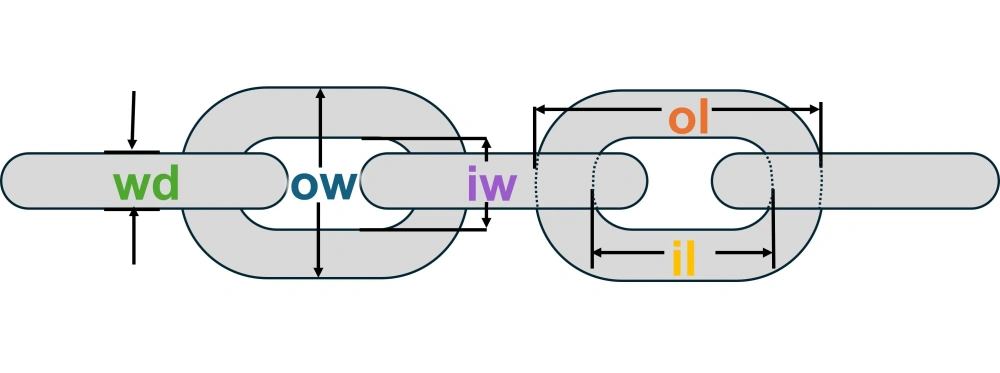
Anchor Chain Sizing
Anchor chain sizing starts with understanding the length of your boat and the weight of your boat. These two factors determine the minimum chain diameter and total length you need for safe anchoring.
Most professionals recommend using a chain length equal to the length of your boat as a starting point. For example, if your boat measures 30 feet, you should consider at least 30 feet of chain.
You can also use the following table to match your boat type with recommended chain lengths:
Boat Type | Recommended Chain Length | Total Rode Length (for 25 ft water) |
|---|---|---|
Sailboats | 30 ft (boat length) | 200 ft |
Yachts | 1/8″ chain per 9-10 ft | Varies based on boat length |
For yachts, a good rule is to use a chain diameter of 1/8 inch for every 9 to 10 feet of boat length. This ensures the chain can handle the weight of your boat and the forces from wind and current.
Powerful Machinery offers customizable anchor chains, including studless anchor chains and dock fender chains, to fit any vessel size or requirement.
Factors Affecting Length
Several factors influence how much anchor chain you need. You must consider not only the length of your boat and weight of your boat, but also environmental conditions and anchoring scenarios.
Weather Conditions:
Calm weather: Use a 3:1 ratio (3 feet of chain for every 1 foot of water depth).
Moderate weather: Use a 5:1 ratio.
Rough weather: Increase to 7:1 or even 10:1 for maximum holding power.
Wind and Current:
Strong winds and currents require longer chains to maintain a low angle of pull and prevent anchor drag.
For anchorages up to 10 meters deep, add wind strength (in knots) to the length of your boat to estimate the required chain length.
In deeper waters, multiply wind strength by 1.5 before adding the boat length.
Tidal Changes:
Tides can raise or lower water levels, changing the effective depth and the required chain length.
Always calculate for the highest expected tide to avoid running short.
Vessel Characteristics:
The weight of your boat and its displacement-to-length ratio affect how much anchor chain you need.
Catamarans and multihulls may need more chain due to increased anchoring stresses.
Chain Material:
Galvanized steel chains offer moderate strength and durability.
Stainless steel chains provide higher strength and lighter weight, but cost more.
Anchoring Purpose:
Permanent moorings require larger, more corrosion-resistant chains.
Temporary anchoring allows for smaller, lighter chains.
Note: Using a longer anchor chain can improve performance in crowded anchorages or deep water. However, too much chain may tangle or snag on the seabed.
Example Calculations
You can calculate how much anchor chain you need with a few simple steps:
Measure the water depth at your anchoring spot. Add the distance from the waterline to your bow roller.
Choose a scope ratio based on conditions:
Calm: 3:1
Moderate: 5:1
Rough: 7:1 or 10:1
Multiply the total depth by your chosen ratio to get the total rode length.
If you use a combination of chain and rope, ensure the chain portion meets the minimum recommended length for your boat.
Example Calculation:
You anchor in 15 feet of water. Your bow sits 3 feet above the waterline. You want a 7:1 scope for rough weather.
Total depth = 15 + 3 = 18 feet
Scope = 7:1
Required rode = 18 × 7 = 126 feet
You need 126 feet of anchor chain or chain and rope combined.
Condition | Ratio | Example Calculation |
|---|---|---|
Calm Weather | 3:1 | 3 feet of chain per 1 foot of depth |
Moderate Weather | 5:1 | 5 feet of chain per 1 foot of depth |
Rough Weather | 7:1/10:1 | 7 or 10 feet of chain per 1 foot of depth |
Powerful Machinery can supply custom anchor chain lengths and diameters to match your vessel’s needs. Their chains meet international standards and provide reliable performance in all conditions.
Measuring and Marking Anchor Chain
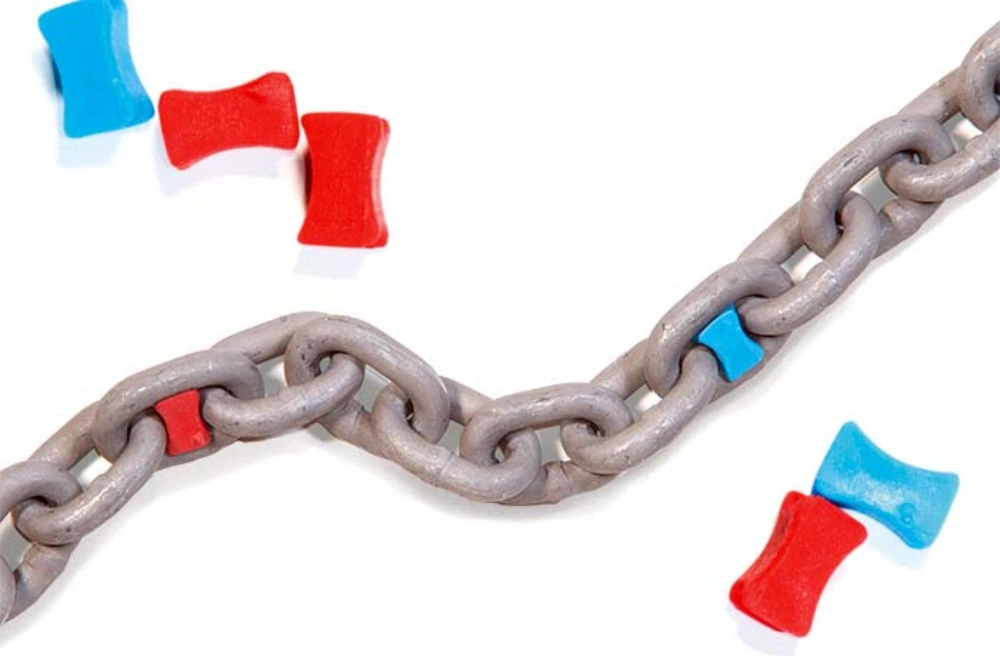
How to Measure Anchor Chain Length?
Accurate measurement of your anchor chain ensures compatibility and safe operation. You should follow these best practices to get precise results:
Measure the outside-to-outside dimensions for both length and width of several links. This prevents windlass mismatch and ensures smooth operation.
Use calipers to measure the wire diameter at the thickest part of the link. This gives you a precise reading.
Check multiple links along the chain. Wear or manufacturing tolerances can cause minor differences. Average your measurements for accuracy.
Inspect and measure regularly, especially before long trips or after heavy use. This helps you maintain optimal performance.
Avoid measuring the wrong part of the chain or using inaccurate tools. Mistakes here can lead to improper sizing and anchor failure.
Consult manufacturer recommendations and marine engineering standards before making a final decision.
Tip: Powerful Machinery offers anchor chains in custom lengths and diameters. Their team can help you select the right size for your vessel, ensuring a perfect fit every time.
How to Mark Anchor Chain?
Marking your anchor chain at regular intervals makes deployment and retrieval much easier. You can choose from several effective marking methods:
Use colored cable ties for a quick, cost-effective solution. Replace them as needed.
Apply strips of tape or heat-shrink tubing between the links. These options provide good visibility.
Paint the chain links with different colors for each depth interval. Prepare the surface with vinegar for better paint adhesion.
Install plastic anchor chain markers. Make sure you select the correct size for your chain.
Sew webbing tabs onto the chain. Color-code them for easy identification.
Note: Develop a color scheme, such as red, white, and blue, to mark every 10 meters or feet. This helps you quickly assess how much chain you have deployed.
Key Benefit | Description |
|---|---|
Enhanced Safety | Clear markings eliminate guesswork and improve anchoring safety. |
Easy Retrieval | You know exactly how much chain is out, making retrieval simple. |
Improved Anchor Control | Markings help you control your anchoring situation in changing conditions. |
High Visibility | Bright markers allow for quick, accurate chain length assessment. |
Peace of Mind | Properly marked chains reduce stress and uncertainty during anchoring. |
Powerful Machinery provides custom marking options and pre-marked chains. These features save you time and ensure your anchor chain is always ready for action.
Powerful Machinery Anchor Chains
You want anchor chains that deliver strength, reliability, and peace of mind. Powerful Machinery provides certified anchor chains designed for demanding marine environments.
These chains use high-quality materials that withstand the pressure and weight of vessels, giving you enduring strength for every anchoring operation. Galvanized mooring anchor chains resist corrosion, which is essential when you face saltwater and moisture.
The zinc coating forms a protective barrier, extending the lifespan of your equipment.
The weight and design of Powerful Machinery anchor chains enhance holding capacity. You achieve stability and prevent anchor drag, even in challenging conditions.
The chain’s weight ensures a horizontal pull on the anchor, which helps it penetrate the seabed and keeps your vessel secure. You can trust these chains to help you with anchoring safely.
Powerful Machinery anchor chains meet strict international standards. You benefit from products that carry certifications recognized worldwide:
Certification/Standard | Details |
|---|---|
ISO9001 | Quality Management System Certification |
HSE Management System | Certification |
Class Certificates | ABS, LR, BV, DNV, NK, CCS, RMRS (from 12 classification societies across 11 countries) |
You have access to a wide range of shackles and chain types. Each option offers unique features for different marine tasks:
Type of Shackle | Key Features | Best Use Cases |
|---|---|---|
Screw Pin Anchor Shackles | Quick connections, secure fastening | Frequent assembly/disassembly |
Bolt-Type Anchor Shackles | Exceptional strength, enhanced safety | Heavy loads, high tension |
Safety Bolt Anchor Shackles | Safety locking prevents unscrewing | Critical environments |
Stainless Steel Shackles | Corrosion-resistant, durable | Marine, offshore, fand ood industry |
To keep your anchor chains performing at their best, follow these maintenance practices:
Inspect chains regularly for rust and damage.
Repair broken links promptly.
Lubricate chains to prevent corrosion.
Rinse with freshwater after use.
Keep the anchor locker clean and dry.
You get more than just products from Powerful Machinery. You receive expert support and solutions tailored to your vessel’s needs.
Conclusion
Selecting the right anchor chain length keeps your vessel safe and stable. Certified, high-quality chains from Powerful Machinery deliver reliable holding power, resist corrosion, and meet strict international standards.
Premium-grade materials ensure durability.
High-strength steel offers excellent corrosion resistance.
Certifications from top marine societies guarantee safety.
Benefit | Description |
|---|---|
Extended anchor system life | Proper maintenance improves corrosion resistance by 35%. |
Prevention of failures | Regular checks help you avoid costly anchor problems. |
Cost savings | Early issue detection reduces long-term expenses. |
Follow best practices and consult experts to protect your investment and enjoy peace of mind on the water.
FAQ
How do you choose the right anchor chain length for your boat?
You should measure the water depth and multiply it by the recommended scope ratio. Consider weather, boat size, and anchoring conditions. Powerful Machinery offers custom chains to match your vessel’s specifications.
What is the difference between stud link and studless anchor chains?
Stud link chains provide extra strength for heavy-duty anchoring. Studless chains offer more flexibility and easier handling. You can select either type from Powerful Machinery, depending on your anchoring needs.
How often should you inspect your anchor chain?
You should inspect your anchor chain before every trip and after heavy use. Look for signs of rust, wear, or damage. Regular checks help you maintain safety and extend chain’s life.
Can you mark your anchor chain for easier deployment?
Yes. You can use colored cable ties, paint, or plastic markers at regular intervals. Marking helps you track chain length during deployment and retrieval, improving safety and efficiency.

